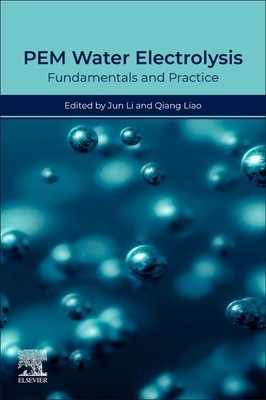
- We will send in 10–14 business days.
- Publisher: Elsevier
- ISBN-10: 0443240620
- ISBN-13: 9780443240621
- Format: 19.1 x 23.5 x 2.4 cm, minkšti viršeliai
- Language: English
- SAVE -10% with code: EXTRA
Pem Water Electrolysis (e-book) (used book) | bookbook.eu
Reviews
Description
PEM Water Electrolysis: Fundamentals and Practice is a comprehensive reference on the design and operation of PEM water electrolyzers. Combining hydrogen production with engineering thermophysics, the book provides a unique resource for understanding the hydrogen production process, from the fundamental concepts to practical implementation. Divided into 4 parts, the book covers all aspects of proton exchange membrane (PEM) water electrolysis. Part I introduces the topic by discussing the current state of hydrogen and the fundamentals of PEM water electrolysis. Part II covers the various components and materials used in PEM electrolysis, including electrocatalysts, proton exchange membranes, membrane electrode assembly, porous transport layer, flow field, and corrosion. Part III explains the key processes involved in PEM electrolysis, such as two-phase flow, heat and mass transfer. Part IV focuses on systems research, covering grid fluctuations, control systems, assembly, diagnosis, and commercialization. In addition, the book provides comprehensive information on the modeling of PEM electrolyzers, including heat and mass transfer and system analysis. Finally, the book contains informative videos of industrial facilities, laboratory setups, and preparation procedures. PEM Water Electrolysis: Fundamentals and Practice is an essential reference for researchers and professionals working on hydrogen production and energy storage.
EXTRA 10 % discount with code: EXTRA
The promotion ends in 22d.00:07:46
The discount code is valid when purchasing from 10 €. Discounts do not stack.
- Publisher: Elsevier
- ISBN-10: 0443240620
- ISBN-13: 9780443240621
- Format: 19.1 x 23.5 x 2.4 cm, minkšti viršeliai
- Language: English English
PEM Water Electrolysis: Fundamentals and Practice is a comprehensive reference on the design and operation of PEM water electrolyzers. Combining hydrogen production with engineering thermophysics, the book provides a unique resource for understanding the hydrogen production process, from the fundamental concepts to practical implementation. Divided into 4 parts, the book covers all aspects of proton exchange membrane (PEM) water electrolysis. Part I introduces the topic by discussing the current state of hydrogen and the fundamentals of PEM water electrolysis. Part II covers the various components and materials used in PEM electrolysis, including electrocatalysts, proton exchange membranes, membrane electrode assembly, porous transport layer, flow field, and corrosion. Part III explains the key processes involved in PEM electrolysis, such as two-phase flow, heat and mass transfer. Part IV focuses on systems research, covering grid fluctuations, control systems, assembly, diagnosis, and commercialization. In addition, the book provides comprehensive information on the modeling of PEM electrolyzers, including heat and mass transfer and system analysis. Finally, the book contains informative videos of industrial facilities, laboratory setups, and preparation procedures. PEM Water Electrolysis: Fundamentals and Practice is an essential reference for researchers and professionals working on hydrogen production and energy storage.


Reviews